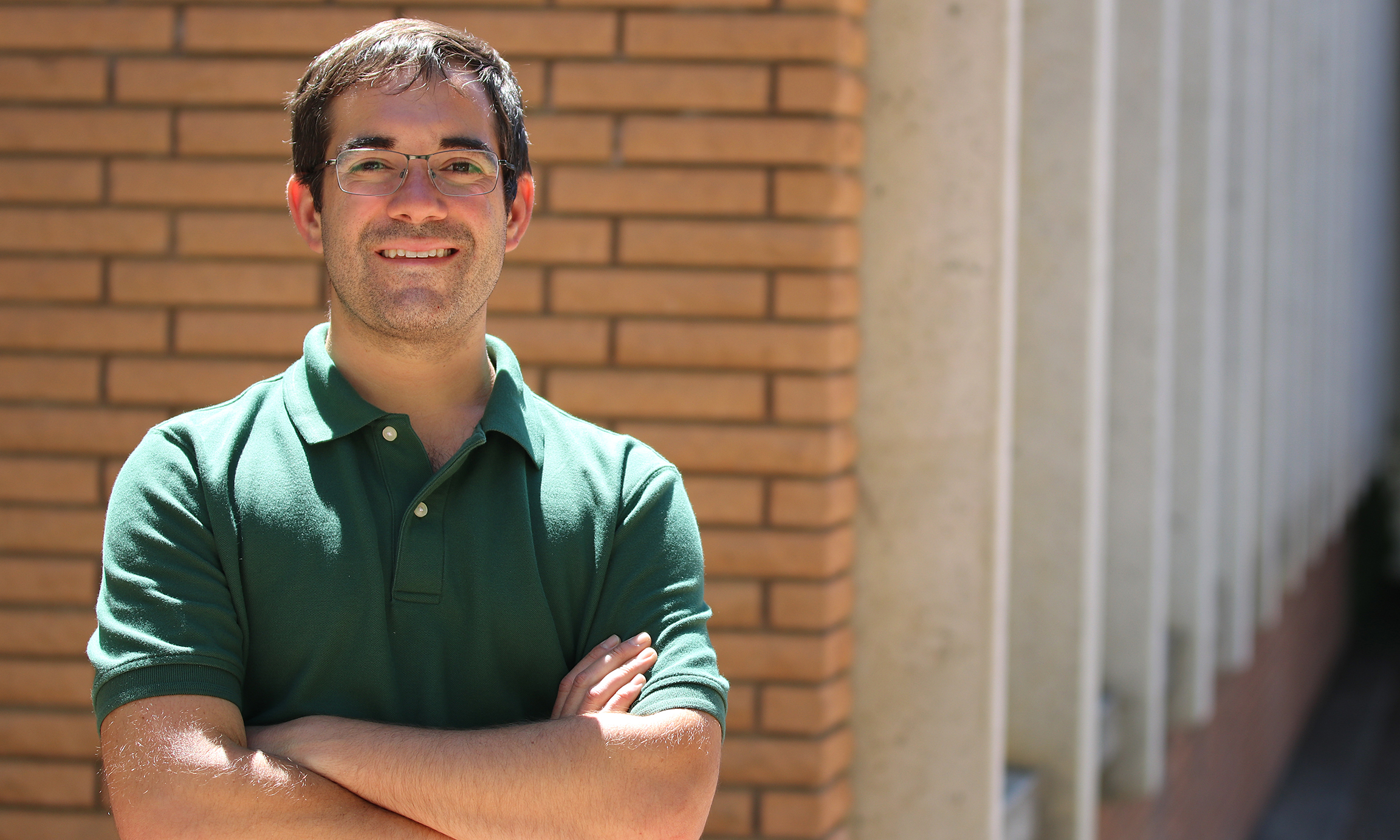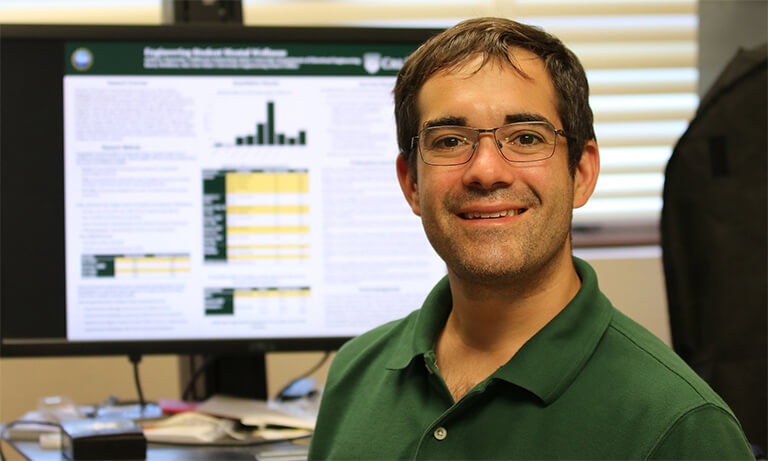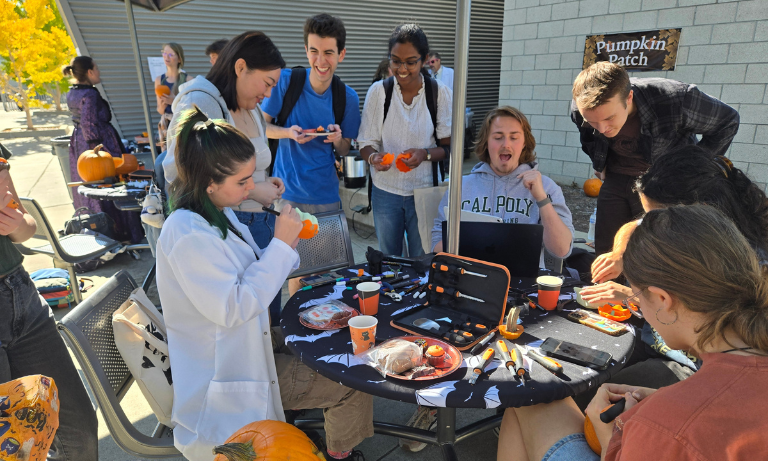Computer engineering Professor Andrew Danowitz was drawn to mental health research after navigating a program where stress and long hours were often glorified.
As a student, he endured significant impacts on his emotional well-being and witnessed his classmates grappling with similar challenges, all in an environment where the stigma surrounding mental health hindered meaningful conversations.
“Engineering has traditionally had a weed-out culture, leading to the belief that you are supposed to suffer,” he explained.
Danowitz took the tools, namely in quantitative research, that he honed during those demanding years to begin studying mental health in engineering education – an area few were examining when he joined Cal Poly’s faculty in 2014.
After penning multiple articles, he’s sharing insights with his colleagues and his own story with students.
“I’ve learned that it’s important to be more open with our students about our struggles – mental health and anxiety – so we can normalize it,” Danowitz said. “We can provide examples of someone seen as successful in engineering but who identifies as having mental health struggles and is actively getting help.
“As a professor and someone who researches this, I know a lot of fellow professors who have struggles, but as a student I never would have realized that.”

Gaps and disparities
Armed with a grant from the National Science Foundation, Danowitz surveyed engineering students at eight institutions across the United States, uncovering a large gap between students who likely had a mental health condition and those seeking professional help.
Danowitz and his research partner Kacey Beddoes from the Engineering Dean’s Office at San Jose State University found that 16% of students surveyed reported they had received a diagnosis, while 50% had not been diagnosed but tested positive for at least one condition upon screening.
By comparison, 37% of college students had received a mental health diagnosis in their lifetime.
“Together, these results suggest that engineering students are either underserved by campus mental health resources or as suggested by previous research, are simply less likely to use these resources,” he said.
Barriers to help-seeking included the fear of a damaged reputation among classmates, concern that a diagnosis will hinder their ability to gain security clearance for certain industry jobs and the belief that since everyone is stressed, there are no real mental challenges to be concerned about.
Similar to what is seen in the general population of the students surveyed, women were statistically more likely than men to screen positive for all anxiety-related disorders and major depression, according to Danowitz, raising the question of whether certain elements of engineering culture and campus life disproportionately weigh on women in engineering.
Additionally, Hispanic students were more likely to experience major depressive disorder and post-traumatic stress disorder symptoms compared to their white counterparts.
The most interesting finding, Danowitz said, was that only physical disability and not learning disability was a predictor for elevated positive screens for mental health conditions.
Respondents with physical disabilities were three times as likely to screen positive for PTSD-like symptoms as their peers – the highest likelihood for mental health conditions among any measured population – pointing to challenges for those with physical disabilities in engineering programs.
“Overall, data indicates that there are significant mental health discrepancies between demographic groups in engineering,” he said, “and those discrepancies favor the dominant population.”
Once COVID hit college campuses, however, the narrative shifted.
Role reversal
Unsurprisingly, Danowitz measured significantly elevated rates of major and other depressive disorders during the pandemic, with 70% screening for at least one mental health condition.
The unexpected finding from sampling taken in summer 2020 was a spike in reported mental health conditions among white males – the majority population – that matched or in some cases exceeded rates reported by women and people of color.
Danowitz believes the surge could be explained by lockdowns that closed campuses, adversely affecting white males.
“What it tells us is that the campus environment for the majority population is enriching and positive, so when that was taken away and replaced with distance learning, members of that group were negatively affected,” he said.
Conversely, women and students of color fared better on mental health measures during distance learning, suggesting that campus life can have a negative impact on the mental health of those outside the dominant population.
“Factors stemming from cultural differences regarding family and community for different groups and the well-documented stressors and barriers faced by people of color and women in fields like engineering likely play a role,” Danowitz said.
When students returned to campus, mental health conditions reported by white males rapidly decreased, he added.
Next steps
Much can be learned from research focused on mental health in engineering education.
“COVID brought mental health to the forefront of education in a way it wasn’t before,” Danowitz said. “There is a broader openness to talking about the challenges faced by those on college campuses.”
For engineering students who may be less likely to seek help, Danowitz believes targeted outreach by campus mental health and counseling services could result in a higher number accessing resources.
His goal is that the College of Engineering will one day have embedded counselors serving that population.
“It is imperative that more support be targeted to different demographic populations in engineering programs, especially those with disabilities and those who identify with multiple marginalized identity groups,” he said.
Assessing campus culture, curriculum and instruction decisions is another key to ensure learning equity.
Danowitz will play a critical role in that assessment after the Computer Engineering Department secured close to $2 million from the National Science Foundation for its five-year Breaking the Binary project. Through workshops, dialogue and critical mentoring, CPE students and faculty will deconstruct structures of oppression in the department.
“A big part of that will be looking at culture change and removing barriers to success for students from all backgrounds,” he said.
In the years since he began researching the subject, Danowitz has made changes in his classroom, adding a statement to his syllabus, giving accommodations and sharing his mental health journey.
“I engage students in discussions about mental health. Some thank me at the end, some don’t. It can be a very personal, uncomfortable subject, but it’s vital that we keep talking about it.”
By Emily Slater
Help is available
If you or someone you know is in immediate danger, please call 911.
Cal Poly Counseling Services offers mental health resources for Cal Poly students at chw.calpoly.edu.
If you are in crisis, call Cal Poly’s Counseling Services anytime at 805-756-2511. After hours, follow the prompts to speak with a counselor.
Call or text 988 anytime to speak to someone from the National Suicide & Crisis Lifeline. This line is open 24/7 and is free and confidential.


